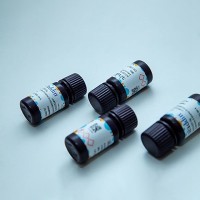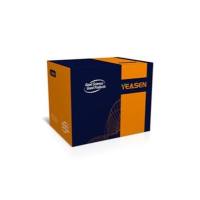Metabolic Labeling with Sulfate
互联网
- Abstract
- Table of Contents
- Materials
- Literature Cited
Abstract
Post?translational modifications of proteins make it possible to determine where a protein normally resides or to follow its transport through the cell. One such modification is addition of sulfate either to tyrosine residues or to carbohydrate side chains. Labeling studies with [35 S] sulfate can be done as continuous or pulse?chase experiments, as described here.
Table of Contents
- Basic Protocol 1: Long‐Term [35S]Sulfate Labeling of Monolayer Cells in Culture
- Basic Protocol 2: Pulse‐Chase [35S]Sulfate Labeling of Monolayer Cells in Culture
- Reagents and Solutions
- Commentary
Materials
Basic Protocol 1: Long‐Term [35S]Sulfate Labeling of Monolayer Cells in Culture
Materials
Basic Protocol 2: Pulse‐Chase [35S]Sulfate Labeling of Monolayer Cells in Culture
Materials
|
Figures
Videos
Literature Cited
| Literature Cited | |
| Baeuerle, P.A. and Huttner, W.B. 1986. Chlorate—A potent inhibitor of protein sulfation in intact cells. Biochem. Biophys. Res. Commun. 141:870‐877. | |
| Beisswanger, R., Corbeil, D., Vannier, C., Thiele, C., Dohrmann, U., Kellner, R., Ashman, K., Niehrs, C., and Huttner, W.B. 1998. Existence of distinct tyrosylprotein sulfotransferase genes: Molecular characterization of tyrosylprotein sulfotransferase‐2. Proc. Natl. Acad. Sci. U.S.A. 95:11134‐11139. | |
| Bowman, K.G. and Bertozzi, C.R. 1999. Carbohydrate sulfotransferases: Mediators of extracellular communication. Chem Biol. 6:R9‐R22. | |
| Farzan, M., Mizabek, T., Kolchinsky, P., Wyatt, R., Cayabyab, M., Gerard, N.P., Gerard, C., Sodroski, J., and Choe, H. 1999. Tyrosine sulfation of the amino terminus of CCR5 facilitates HIV‐1 entry. Cell 96:667‐676. | |
| Huttner, W.B. 1984. Determination and occurrence of tyrosine O‐sulfate in proteins. Methods Enzymol. 107:200‐223. | |
| Huttner, W.B. and Baeuerle, P.A. 1988. Protein sulfation on tyrosine. In Modern Cell Biology, Vol. 6 (B. Satir, ed.) pp. 97‐140. Alan R. Liss, New York. | |
| Linhardt, R.J. 1994. Analysis of glycosaminoglycans with polysaccharide lyases. In Current Protocols in Molecular Biology (F.M. Ausubel, R. Brent, R.C. Kingston, D.D. Moore, J.G. Seidman, J.A. Smith, and K. Struhl, eds.) pp. 17.13.17‐17.13.32. John Wiley & Sons, New York. | |
| Niehrs, C. and Huttner, W.B. 1990. Purification and characterization of tyrosylprotein sulfotransferase. EMBO J. 9:35‐42. | |
| Niehrs, C., Huttner, W.B., and Rüther, U. 1992. In vivo expression and stoichiometric sulfation of the artificial protein sulfophilin, a polymer of tyrosine sulfation sites. J. Biol. Chem. 267:15938‐15942. | |
| Yanigashita, M., Salustri, A., and Hascall, V.C. 1989. Specific activity of radiolabeled hexosamines in metabolic labeling experiments. Methods Enzymol. 179:435‐445. |









